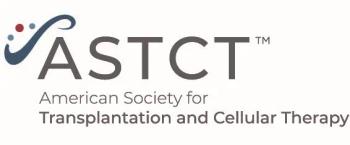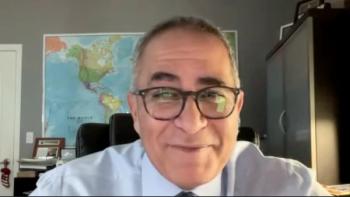
Stringent Complete Response in Multiple Myeloma Associated With Best Survival Outcomes
Patients able to achieve stringent complete response after undergoing autologous stem-cell transplantation for multiple myeloma achieved improved long-term outcomes, including overall survival and time to progression, compared with patients who achieved lesser levels of response.
Patients able to achieve stringent complete response after undergoing autologous stem-cell transplantation (ASCT) for multiple myeloma achieved improved long-term outcomes, including overall survival and time to progression, compared with patients who achieved lesser levels of response.
“Our study demonstrates that post-ASCT stringent complete response is a realistic, attainable goal and a surrogate for improved survival, and as such, it should be desirable and reported as a separate category in all myeloma-related clinical trials,” Prashant Kapoor, MD, of the Mayo Clinic, Rochester, Minn., and colleagues
The International Myeloma Working Group has developed uniform criteria to define levels of response in an attempt to eliminate ambiguities and allow for the comparison of data across different trials. Among the definitions is that of stringent complete response, defined as those patients “achieving complete response for whom the involved free-light chain reduced sufficiently to normalize the free-light chain ratio in the absence of monoclonal bone marrow plasma cells as assessed my immunohistochemistry or immunofluorescence.”
In this study, Kapoor and colleagues attempted to help validate the group’s definitions by evaluating response in 445 consecutive patients with multiple myeloma who underwent ASCT within 12 months of their diagnosis.
Thirty-three percent of patients in the study achieved a complete response with 24% achieving stringent complete response. Those patients achieving stringent complete response have not yet reached their median overall survival. In comparison, patients achieving complete response had a median overall survival of 81 months and those achieving near complete response had a median overall survival of 60 months (P < .001, compared with stringent response).
Patients achieving stringent response had a 5-year overall survival rate of 80% compared with 53% for complete response and 47% for near complete response.
“No survival difference is noted between patients achieving near complete response and standard complete response when those reaching stringent complete response were categorized separately,” the researchers wrote. “Therefore, our study questions the prognostic value of further achieving immunofixation negativity after reaching near complete response (ie, deepening response to standard complete response) unless the free-light chain ratio normalized and clonality disappears (ie, stringent complete response is achieved).”
A stringent complete response also conferred a longer time to progression compared with complete response or near complete response (50 months vs 20 months vs 19 months). Results showed that achieving a stringent complete response was an independent prognostic factor for survival (HR = 0.44; 95% CI, 0.25-0.80; vs complete response; P = .008).
The researchers also conducted a 2-year landmark analysis and found that overall survival rates of those patients achieving stringent response continued to be superior compared with patients achieving complete response (overall survival not reached vs 70 months; P = .007).
“The results indicate that stringent complete response represents a deeper response state compared with conventional complete response, translating to longer duration of response after stem-cell transplantation and improved overall survival,” the researchers wrote.
Newsletter
Stay up to date on recent advances in the multidisciplinary approach to cancer.
















































































